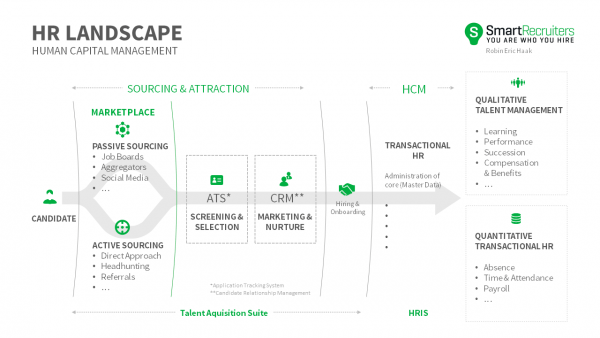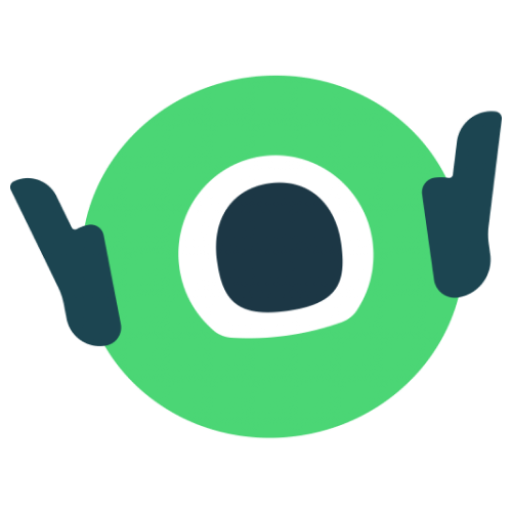You are who you hire.
It’s all about people. It’s as simple as it is true. In our time of accelerating change, a company’s ability to source the right talent, and to do so at scale, will ever more determine its path – whether it leads towards future growth or towards failure.
The pressure is on, no doubt. In the 1950s, a Forbes500 company could expect to operate about 75 years; now it’s lifespan is down to 15. Owning dozens of patents or simply having access to capital and resources no longer cuts it. What is needed instead, is talent – a skilled workforce that can keep up with rapid digitization and ever shorter innovation cycles. Yet, we are about to find ourselves confronted with a serious shortage of qualified candidates. By 2020, the demand for highly-skilled digital natives will already exceed supply by 40 million. And that is in the US alone. According to a recent BCG study, 70% of CEOs recognize the importance of securing the right employees, listing it among their top 5 priorities.
This makes me wonder: why is this not every company’s top priority? After all, recruiting has the potential to be a company’s key competitive advantage – the one that places it well ahead of the curve. A company can expect 3.5 times more growth through better recruitment (BCG). So why treat it merely as another administrative cost center?
Let’s be clear here. Hiring success is business success. And in order to hire the best people, you need the best recruitment solution.
The future is intelligent HR tech
Better matching of candidates to jobs is likely to raise GDP by up to $2.7 trillion by 2025 and create 72 million jobs, according to McKinsey.
The reason, as so often, is in the evolution of algorithms, machine learning, deep learning, and AIs. Their main impact – which is sure to be vast – will affect both areas of the hiring process:
- Sourcing: Intelligent matching combs through the marketplace and evaluates the fit between potential candidates and jobs – saving hours of manual screening work. LinkedIn, XING and Jobspotting were forerunners in this field; with the advent of Google Jobs, there is again bound to be accelerated development.
- Selection: Sophisticated Application Tracking Systems (ATS) assess candidates and their CVs for hard skills, education, and work experience, which again saves time for recruiters and hiring managers. The advent of greater automation – perhaps somewhat surprisingly – makes the entire process more human again: hiring managers and recruiters have more time to build relationships with candidates and to determine their fit.
With such powerful technologies, candidates and companies will be able to find the needle in the haystack: the applicant or position that best fits their needs and goals.
ATS and sourcing, combined intelligently, will be a win-win for everybody. Considering the entire HR tech ecosystem, then, what does it take to get maximum efficiency and better hiring?
The three building blocks of HR tech

Everything that happens after onboarding is in the domain of HRIS (Human Resource Information System). Nearly all organizations have some form of HR, payroll, and performance management software and have for a long time; this is straight-up, first generation data management and automation. HR Management Systems are used to manage records, automate payments, and other information on their existing staff. The solutions in this arena are both well known and time honored.
The recruitment phase, i.e. everything prior to onboarding, is a completely different kettle of fish. Unlike HRIS, the tools that matter here are less about record management and automated transactions, but about strategic business growth through intelligent analytics – the very innovations that companies will need to hire the best talent. The components are as follows:
- Candidates are sourced actively and passively through all available channels: for simplicity’s sake, I’ll use the term marketplace to refer to everything that relates to sourcing and attraction.
- The screening and selection phase, meanwhile, is the domain of standard ATS: this is what happens once a candidate has applied and is evaluated for the position. As we’ve seen above, efficiency in screening candidates and applications (in the marketplace or the recruitment phase) will skyrocket through new intelligent tools.
- Finally, many companies also recognize the need to nurture potential employees through CRMs (Candidate Relationship Management), e.g. those that perhaps didn’t make it through the application rounds for one specific job but are promising enough to keep in the candidate pool. Additionally, CRMs allow companies to track interesting profiles prior to any application, nurture a relationship with them and build the path to a future application and successful hiring.
Put all three together, and you have a talent acquisition suite.
The case against the Swiss Army Knife
With HRIS being so established and successful, several providers have developed full-suite offers, adding a third-party ATS to their portfolios or building “native” ATS on their HRIS architecture. That’s easy and convenient, sure. But it makes just as much sense as it does to use a Swiss Army Knife when what you really need is a set of different saws and a power drill.
Of course, many companies have long-standing contracts with their HRIS provider. Perhaps the IT department is also rallying to simply adopt the ATS add-on offered by their HRIS vendor. And yet, I would tell any hiring manager that opting for a full-suite approach only makes sense if getting the best people isn’t important to their business.
Consider the purpose and evolution of HRIS and ATS. Putting aside the fact that they’re both “HR tech solutions,” they don’t have that much in common in terms of core competency. HRIS have data processing inscribed in their DNA. A good ATS, on the other hand, is about taking recruitment to the next level: it’s intuitive, collaborative and fantastically easy to use for all the different parties involved. It supports a process that is much closer to marketing and sales, not payroll and time & attendance. That is so much more than record management.
You’re not going to fell the tree with a Swiss Army Knife, are you?
The solution: a dedicated talent acquisition suite
The way forward is simple: opting for two separate but highly optimized systems. An HRIS for the critical areas of HR management plus a separate, strategic talent acquisition suite – an ATS that includes a marketplace and CRM.
Let’s look at the key features and qualities of a talent acquisition suite that builds organically on its core expertise and empowering companies to attract and hire the best candidates. Ideally, the ATS lies at the heart of such a solution, integrating a marketplace and CRM into the process it optimizes:
- Candidate Experience
No matter how good an ATS looks to hiring managers – it’s worth very little if terrible UX or haphazard integration makes the applications process unnecessarily lengthy and cumbersome. One-click functionality and mobile access are not luxuries or nice-to-haves. They are absolutely vital. Candidates should be able to apply to jobs listed on different platforms without having to click around different websites or open several new accounts. Too many companies have lost out on amazing passive applicants because simple features like email scheduling and automation weren’t fully optimized, tarnishing the brand experience. In the current talent economy, nothing short of a beautifully simple solution will cut it. - Hiring Manager Engagement
Hiring managers will benefit from a solution that makes collaborative processes a lot easier, streamlined, and perhaps even fun. (Ideally, this will put an end to recruiters’ frequent complaint that it’s hard to engage hiring managers.) With mobile access, intuitive feedback options and structured tasks and reminders, hiring managers will find it easy to identify their most promising candidates together. And don’t forget: time is of the essence in recruiting. Getting all stakeholders to collaborate more effectively ultimately means winning or losing the best candidates. - Recruiter Productivity
No more “post and pray” for recruiters. With intelligent analytics, recruiters can see at one glance which platform or marketplace funnel is getting them the best ROI – and ROQC (Return of Quality Candidates). In addition, a good ATS should facilitate both interview management and collaboration with other stakeholders; at best, it features a CRM to nurture relationships with talent beyond one application round. This allows recruiters to tweak recruiting processes according to the present needs of the company, creating a high degree of customization – because there is no “one size fits all.”
The Bottom Line
No matter what you do – recruiting will be a game changer. But will you allow it to change your game for the better or the worse?
Let’s face it: within the next five years, any company with more than 50 employees will have an ATS. Even just in the past few years, the category has seen disruptive developments. It is expected that within five to ten years, all processes will have become automated, drawing on more and more sophisticated innovations in cloud computing, big data, and AI.
So let’s not wait. There are great solutions already out there, and they’re only becoming better. And as they are becoming better, so are your company’s chances of finding itself on the side of success. You’ll only get the best people by making your recruiting more strategic – by choosing a highly innovative talent acquisition suite.






